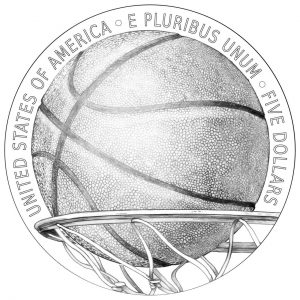Nov 25, 2019 | administrative, commentary, US Mint
 The result of the sale of the Enhanced Reverse Proof 2019-S American Eagle continues to reverberate through the hobby. Industry reporters continue to hear from collectors that they feel like the U.S. Mint is taking them for granted.
The result of the sale of the Enhanced Reverse Proof 2019-S American Eagle continues to reverberate through the hobby. Industry reporters continue to hear from collectors that they feel like the U.S. Mint is taking them for granted.
The biggest question is, how did all of these dealers get these coins in inventory? How did others find the stock to flip on sites like eBay?
Dealers and speculators are at it again. It is similar to the chaos they caused for the opening of the 2014 JFK 50th Anniversary Gold Proof Coin. They hired people to shand in line for them who caused a near riot. Now, they have taken these manners to cyberspace.
How can the U.S. Mint fix the issue?
The best answer I have heard came from William T. Gibbs at Coin World, who suggested a dedicated sales window for established customers. Gibbs wrote:
For popular limited edition coins like this one, the Mint should open the sales first to established customers — those individuals who qualify in some definable way as being loyal Mint customers. That could be based on such factors as dollars spent on Mint products over a period of time, or total years that a customer has bought items from the Mint. Open a 24-hour window catering to these customers only and then, if any coins remain, open sales to new customers.
What an excellent idea!
The U.S. Mint can create a “Collector’s Club” where non-commercial customers can earn points. The more points, the closer to the front of the line you get to access limited edition items. They can slowly add perqs for better customers, including levels for reduced and free shipping.
There is no reason to prevent the U.S. Mint from making the Collector’s Club a policy. The only question is whether they have the wherewithal to implement something like this. I do not think they do, but I hope they prove me wrong!
Nov 18, 2019 | coins, commentary, Eagles, news, US Mint
 The biggest numismatic-related news of the week that not reported in many media outlets. It was the failure of the U.S. Mint to deal with a high volume of orders for what everyone anticipated would be a popular product.
The biggest numismatic-related news of the week that not reported in many media outlets. It was the failure of the U.S. Mint to deal with a high volume of orders for what everyone anticipated would be a popular product.
On November 14, 2019, the numismatic community rushed to the U.S. Mint website. It flooded their call center attempting to purchase the 2019 American Eagle One Ounce Silver Enhanced Reverse Proof Coin. As with almost all of their past launches, the U.S. Mint e-commerce systems failed the collecting community.
Collectors reported web failures, outages, and disconnection on the telephone trying to order the product. I was first alerted of a problem by a family member and my mailbox filled with readers who experienced similar issues.
After hearing the criticism, the U.S. Mint issued the following statement:
At the moment of launch, there were 99,000 people online and 4700 callers waiting to purchase the American Eagle 2019 One Ounce Silver Enhanced Reverse Proof Coin (19XE). Completed orders were processed until all inventory was sold. We are constantly seeking feedback from our customers, and rest assured your voice is being heard.
To try to spin this further, on Friday, the U.S. Mint issued the following statement:
Yesterday, the Mint catalog website had more than 150,000 unique visitors and 1.6 million page views in the first hour of sales of the American Eagle 2019 One Ounce Silver Enhanced Reverse Proof Coin (19XE). For context, the catalog website’s previous highest traffic and page views were for the Apollo 11 product launch, when we had 124,000 visitors in one day and 863,000 page views in one hour. We are pleased with the numismatic community’s response to this product. The volume of traffic did briefly slow down our site response. However, after the first two minutes we were able to process over 1800 orders per minute on average. Completed orders were processed until all inventory was sold. Additionally, we identified approximately 5% of traffic as coming from bots, including 3% of traffic from a single IP address, of which zero orders were processed.
With all due respect to the U.S. Mint, if this is beyond your capacity, then the competence of the Mint and their contractor (aren’t they contracted with Pitney-Bowes?) are in question. There are e-commerce systems that have higher capacity requirements and service their customers better.
The failure of their e-commerce system is not a new problem for the U.S. Mint. We can go back through the history of this blog to note how badly they have implemented their e-commerce systems.
Frankly, I am not surprised. Years ago, when I was a contractor within the Department of the Treasury, I had to listen to how the U.S. Mint’s systems were built to be greater and better than anyone else in the department. Their technology directors touted their capacity and their capabilities over all the other bureaus. They used these reasons to allow them to separate themselves and to avoid integration with other systems, even suggesting that they be the central integrators for the department.
Even though I have not worked within the Treasury Department in many years, the results and the spin published by their public relations department demonstrates that the chutzpah continues.
For four years, the U.S. Mint has been holding forums to try to learn from collectors what they expect. One thing they have not learned is to fix the mechanisms that provide collector access to U.S. Mint products. It is time for the U.S. Mint to stop talking and do something. Their problems have surpassed annoying and are bordering on malfeasance!
And now the news…

November 12, 2019
We all have them, worth almost nothing, but still can be useful. They are the little button-sized ¢5 coins that fill up your pockets or coin jar, that the Banco Central (Central Bank) will stop minting starting January 1, 2020.

→ Read more at
qcostarica.com

November 12, 2019
LOWELL, Mich. — When 43-year-old Jason Faraj entered Collector’s Korner in Lowell, the smooth-talking antiques aficionado gained the trust of the store owner and left with more than $5,700 in merchandise.

→ Read more at
wzzm13.com
Oct 20, 2019 | Australia, Britain, coins, commentary, US Mint
 Perusing the wide world of coins, I noticed that it is only here in the United States that collectors complain about modern coinage. Why?
Perusing the wide world of coins, I noticed that it is only here in the United States that collectors complain about modern coinage. Why?
My Twitter followers (@coinsblog) have seen the articles coming from the United Kingdom. U.K. news outlets have staff that follows the special issues from the Royal Mint that are selling for hundreds of times over their face value in online auctions. These coins have a limited run and are issued as circulating commemorative coins.
Similarly, the Royal Australian Mint recently released an alphabet series, similar to what the Royal Mint did in 2018. As part of the series, they created a stir when they used the letter “X” to highlight a small village in Western Australia. Aussies learned something about their own country.
In the United States, we bemoan new issues by the U.S. Mint. We look at the coins and come up with some reason to dislike them. Many of the reasons range from the parochial to the absurd.
Dealers do not like them because they make more money on selling you what they think are “better” coins. Rather than try to use the opportunity to get people interested and into their shop, they would rather sell a more expensive coin. Note to dealer: selling 100 coins at a $1 profit is the same as selling one coin for a $100 profit except that you now have 100 new customers rather than recycling old ones.
Another reason I hear is that modern coins are not worth the money and, therefore, not worth the time. Really? Are you collecting or investing? Are you enjoying your collection, or is it something to do?
Recently, I sold off my Morgan Dollar collection. I started the collection many years ago and realized that I did not have the eye for coins that I have today. I also lost interest.
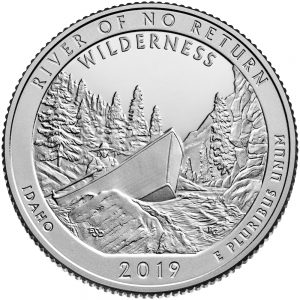 Someone asked what am I collecting today. I respond with modern circulating commemoratives. When I get a strange look, I have been responding with, “do you know what the Frank Church River of No Return Wilderness is?”
Someone asked what am I collecting today. I respond with modern circulating commemoratives. When I get a strange look, I have been responding with, “do you know what the Frank Church River of No Return Wilderness is?”
Who is Frank Church, and what is the River of No Return? If you paid attention to the American the Beautiful Quarters program, you would learn more about your own country. I did not know about this wilderness area in Idaho until I looked at the quarter.
I also learned that the Northern Mariana Islands and Guam, both United States territories, have beautiful memorials to those who gave their lives in World War II.
Now collectors are lamenting the new American Innovation $1 coins. Why? Because they do not circulate? Then go pick up a roll and start spending them! You can show people the series that is beginning with honoring Annie Jump Cannon, who invented a system for classifying the stars still used today. Aside from being a Delaware native, Cannon was a suffragist and hearing impaired.
Stop being so stuck up about modern coins, buy a roll, and give someone a William Henry Harrison dollar. Then ask them why Harrison is so important to U.S. history? Pick a president who is not famous and do the same exercise.
If you have children, why not plan a trip based on the quarter that has been released. If you cannot travel to Guam to see the War in the Pacific National Park, then a trip to San Antonio Missions National Historic Park. You can also Remember the Alamo and visit a fascinating area of the country.
Collecting modern coins may not make the dealers rich or be a great investment. But there is enough material to have fun beyond just accumulating metal discs.
And now the news…

October 10, 2019
Weet-Bix is given the “W” in an A-to-Z collection depicting “all things Australian.” Weet-Bix, a breakfast cereal manufactured by a Seventh-day Adventist health food company in Australia, is set to cement its icon status.

→ Read more at
adventistreview.org

October 11, 2019
Finance minister Tito Mboweni on Friday finalised the designs for the 2020 silver Kruger Rand and the R25 Natura Series collectable coin due next year. He also gazetted an update to a coin design that makes a leopard featured in a Big 5 collectable coin series somewhat less angry.

→ Read more at
businessinsider.co.za

October 12, 2019
As many as 96 varieties of coins used during the period of the Western Ganga dynasty, which ruled Karnataka, are among the attractions at the three-day philately and numismatic exhibition here. Among the other exhibits at the 12th State Level Philately Exhibition organised by the Karnataka Postal Circle are commemorative coins, Chinese gold panda coins, stamps on 100 years of Indian cinema.

→ Read more at
thehindu.com

October 12, 2019
ANCHORAGE, Alaska (AP) — A young Alaska Native woman left an impression on Alaska’s territorial Senate in 1945, delivering a speech that led to the passage of the nation’s first anti-discrimination law.

→ Read more at
seattletimes.com

October 15, 2019
MURRELLS INLET — The ship owned by the richest man in America is giving up its gold, again. The North Carolina was a side-wheeled steam packet, a coastal transport that carried mail and was owned by Cornelius Vanderbilt.

→ Read more at
postandcourier.com

October 16, 2019
One of the rarest coins in the world is set to sell at auction for an incredible £1.6million. The Umayyad gold dinar dates back to 723AD and was made from gold mined at a location owned by the Caliph – one of the successors to the Prophet Muhammad.

→ Read more at
dailymail.co.uk

October 16, 2019
A Bunbury businessman has unearthed one of Australia’s rarest coins — worth more than $10,000 in mint condition —while birdwatching in the Goldfields outback. Mick Cross was photographing birds at Malcolm Dam near Leonora when he picked up a small coin sitting in the dirt metres from the popular camp site.

→ Read more at
thewest.com.au

October 16, 2019
Calling all Antique Roadshow enthusiasts. Have you ever seen a large metal coin featuring an old lamp with the number 60 on it? After discovering this mysterious-looking coin among her Grandmmother’s collection, a woman from Chilliwack is asking the public if they have any idea what it is.

→ Read more at
coastmountainnews.com

October 18, 2019
Nowadays, having savings and investments both have equal weight in importance and necessity as well. In terms of investments, there are a lot of options for you to choose from. These options range from stock investments to mutual funds to cryptocurrency.

→ Read more at
nuwireinvestor.com

October 19, 2019
Binyamin Elkin, the six-year-old son of Jerusalem Affairs and Heritage Minister Ze'ev Elkin discovered a 2,000-year-old coin from the City of David excavations at the President's Residence on Thursday.

→ Read more at
israelnationalnews.com
Oct 14, 2019 | Australia, Britain, coins, news, US Mint

X is for Xantippe
(Image courtesy of the Royal Australian Mint)
In the chapter, Santayana was emphasizing the need to use every experience as a lesson to improve the future. The rest of the chapter discussed how to apply lessons from things that went well.
What does George Santayana have to do with numismatics? Numismaitcs has not learned from the past and making the same mistakes expecting a better outcome. In other words, the numismatic industry is fulfilling the axiom credited to Albert Einstien: “the definition of insanity is doing the same thing over and over and expecting a different result.”
What are we doing wrong? Let’s look at it in the context of this week’s news. Following the lead of the Royal Mint, the Royal Australian Mint is producing 26 limited-edition circulating one-dollar coins with the letters A to Z along with a depiction of something Australian that represents that letter. They call it the Great Aussie Coin Hunt.
Some letters are easy, like G for G’Day or V for Vegemite. Others do not have obvious names. When it came to X, the Royal Australian Mint picked Xantippe.
What is Xantippe?
Aussies were perplexed when trying to figure out who, what, or where Xantippe could be. That is when the Royal Australian Mint revealed that Xantippe is a small farming town in Western Australia.
For the Royal Australian Mint, it was the perfect way to get the message out about the new dollar coins. It caused a minor yet fun controversy that had the county talking about the series creating excitement about finding the coins.
In the UK, the Royal Mint had a similar program called The Great British Coin Hunt. In 2018, the Royal Mint issued 10 pence coins struck with British themes. Along with the other limited edition 50 pence themed coins, the Royal Mint keeps Brittons interested in coins by generating excitement about each release.
In the United States, we also saw excitement about looking for coins. We saw an increased awareness of coin collecting during the 50 States Quarters Program. Earlier this year, there was some interest shown over the release of the W mint quarters. The interest was not as strong as the 50 State Quarters, but people heard about the coin.
But that was for National Coin Week. What has happened since then?
Learn from the positive: by advertising, getting the word out, and promoting the coins, the US Mint is capable of getting people interested. By having the numismatic industry join them, people were paying attention.
Since the end of Nation Coin Week, the numismatic industry has been silent to those outside of the hobby. Most of the promotion has been like preaching to the choir. We get it. We got it. But you cannot keep an industry going that outsiders are claiming is dying.
Numismatics is not dying or near death. Like every hobby, it has problems to overcome. The first step to better health is to expand the base. The only way that could happen is if the numismatic industry does something radical: reach out consistently to everyone.
It is time to learn what worked in the past and stop doing the same things over again.
We can learn lessons from other industries. What about the collector car industry? Nearly 20 years ago, the collector car industry existed but was not that strong. The thought was that getting into cars was expensive, time-consuming, and confusing. Then Discovery Networks fell over the answer.
For Discovery, it started as HDNet, a television channel where they experimented with high definition content. They would create something in high definition and air it on HDNet to test the public’s reaction. Interestingly, the shows about cars were their most highly rated content. Then they contracted with Mecum Auctions to broadcast their events, and the ratings for a niche cable channel were higher than expected.
HDNet was renamed to Velocity. Now it is owned by Motor Trend, who rebranded the channel in its name.
Although the car hobby business was doing well, the trade publications point to the rise of HDNet and Velocity as a reason that the hobby is doing better than ever.
What can we learn from putting cars on television? First, there is an interested market out there that may not know where to turn for information. The shows provide both knowledge and entertainment. While there are shows that have a doctrine-like attitude, most are inclusive of all styles and interests.
Just like in numismatics, there is no single way to collect and enjoy cars. And like cars, there is a lot that can be used to teach everyone about history.
There was a multi-part series about the growth of the auto industry that followed many of the early titans, including Henry Ford, William Durant, and Walter Chrysler. One of the segments was their reactions to World War II, while the story was about how the automotive industry also showed how the country participated in the war effort.
What stories can be told about the 1943 steel cent? What about the “Shotgun Shell” cents struck in 1944 by recycling spent shells picked up from the training field?
How about some fun shows? Numismatic Jeopardy, where the questions are based on answers derived from something numismatic-related. For example, “It’s called the Old Line State.” The answer is on the reverse of the 2000 Maryland State Quarter!
Revive the old PBS show History Detectives and do it with numismatics. After all, they did investigate a coin said to be associated with Annie Oakley and a $6 Continental Currency note found in Omaha.
These are a few ideas. I am sure that others can come up with better ones.
Then again, that may mean that the industry will have to break out of its niche comfort zone and embrace something different.
And now the news…

October 4, 2019
Metal detectorists have made many amazing discoveries down the years in Britain, with a great hoard of 2,600 coins just revealed last month. But there are strict rules regarding archaeological finds made by detectorists.  → Read more at ancient-origins.net
→ Read more at ancient-origins.net

October 6, 2019
The Royal Australian Mint is producing 26 limited-edition legal tender coins that will be given out as change at post offices over the coming weeks. The A to Z of Australiana could see you pocketing a Neighbours , Weet-Bix or didgeridoo $1 coin in your small change.  → Read more at news.com.au
→ Read more at news.com.au

October 8, 2019
The UK’s Treasury plans to commemorate Brexit by minting millions of 50 pence ($0.61) coins. But like many of the Conservative government’s recent moves, there is a major flaw: the imprint date will be the Oct.  → Read more at qz.com
→ Read more at qz.com
Sep 9, 2019 | coin design, coins, commemorative, US Mint
During a ceremony at the Naismith Memorial Basketball Hall of Fame in Springfield, Massachusetts on September 6, the U.S. Mint unveiled the design for the 2020 Hall of Fame commemorative coin.
The obverse of the coin, designed by Artistic Infusion Program artist Pheobe Hemphill, has an image looking down into the net from the rim. Superimposed on above the rim are three players: a man, woman, and wheelchair player, reaching for a ball.
The design is something that represents the Basketball Hall of Fame. As opposed to Halls of Fame from other sports, the Basketball Hall of Fame honors the best basketball players from any arena, not just from the professional leagues.
The reverse of the curved coin, designed by Artistic Infusion Program artist Justin Kunz, the image of a basketball as it is about to drop into the basket. While using the image of a ball is similar to what the U.S. Mint used for the 2014 Baseball Hall of Fame Commemorative Coin, this one is a little different. For this commemorative coin, the ball does not take up the entire side, leaving a distinct rim around the ball. Also, the ball will be on the concave side of the coin.
Line drawings of coin designs do not provide the perspective of the final product, making it difficult to judge. The design unveiled in Springfield appears to have a lot of potentials. Let’s hope that the final product can be just as nice.
Although U.S. Mint Director David Ryder once mentioned something about selective coloring on this coin, there has been no formal announcement from the U.S. Mint.
A video of the ceremony is available on the NBA’s website.
Sep 3, 2019 | ANA, coin design, coins, commentary, education, technology, US Mint
Although it has been a while since I have posted something outside of the Weekly World Numismatic News, it does not mean that I have been idle. Here are some random thoughts:
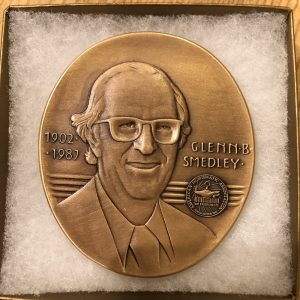
2019 Glenn B Smedley Medal
ANA President Steve Ellsworth asked me to continue as Chair of the Technology Committee. I accepted his appointment. Steve has a different vision for how to move forward. Change is a good thing and will work with him and the Board to do what is best for the ANA.
There continues to be work to do for the ANA to add technology to the numismatic experience. One of the areas I would like to include more technology are the exhibits. After speaking with one person familiar with the exhibiting process, I think there are ways to add technology without technology overshadowing the numismatic content. I will have a proposal shortly. Stay tuned.

2007 Somalia Motorcycle Coins
I love these coins but is this the direction the U.S. Mint should go?
There are many collectibles whose values have declined over the last year, including some collector coins. One area that remains low are those collector sets produced by the television hucksters or the private mints. These firms overhype the value of their wares to convince buyers that they should purchase them as an investment. Recently, I handled an estate with several items purchased from QVC and the Franklin Mint. All of the coins were overpriced. The family was upset when I provided my valuation. I will talk about this more in a future post.
Another article idea that is inspired by my business is the difference between collecting and investing. Although some people like to try to mix the two, most of the time, the result is that the investor does not create a compelling collection while most of the collectors create value without trying.

I sold my silver Pandas. I lost interest after the composition was changed but the hype has kept the prices up. Hype is not a long-term strategy.
Finally, I am still waiting to find a “W” quarter in change. I have yet to see one. Most of the people I know that are looking for these quarters are roll hunting. If I were into conspiracies, I would suggest that the Mint did this on purpose to increase the demand for quarters. People would demand rolls of quarters, forcing the Federal Reserve to order more.
Considering the U.S. Mint is a government agency, I bet they are storing most of the quarters in Area 51! After all, if we are going into conspiracy theories, we might as well go all of the way!
Aug 1, 2019 | Carson City, coins, commemorative, history, legislative, US Mint
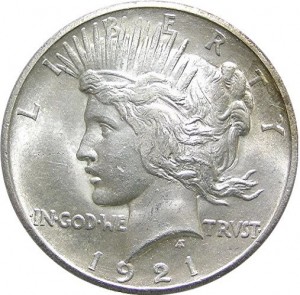
1921-D Peace Dollar
The bill calls for the issue of no more than 500,000 $1 silver coins commemorating the Morgan dollar and the Peace dollar in 2021. If passed, 2021 will mark the 100th anniversary of the end of the Morgan Dollar and the beginning of the Peace Dollar.
Aside from being excited about the issue of the coin, the one line that has caught the interest of collectors is that “it is the sense of Congress that if the Secretary determines it to be feasible and cost effective, the Secretary may mint some of the coins minted under this Act at the Nevada State Museum (formerly a United States Mint facility) located in Carson City, Nevada.”
Although it seems like a good idea, there are a lot of questions whether striking coins in Carson City would be feasible. Since the facility is an active museum, would Nevada be willing to give up a piece of their operations to the federal government? How disruptive would be to the museum’s activities before and after striking the coins?
How would the U.S. Mint strike coins at the museum? While the facility has old coining presses used for demonstrations, they may not be capable of manufacturing modern coinage. Then there is the other equipment involved including an upsetting mill to put an edge on the coin.
The Carson City Mint was built in 1863 to building codes and security standards of the mid-19th century. After the Mint stopped striking circulating coins in 1893, the building became as Assay Office. In 1933, the Great Depression ended its service as an Assay Office. The federal government sold the building to Nevada in 1939. While the Nevada State Museum has updated the building’s security, it is doubtful that it would meet modern U.S. Mint requirements.
Striking coins with the CC mintmark may have an appeal to the collecting community, it might not be feasible and cost-effective.
S. 239: Christa McAuliffe Commemorative Coin Act of 2019
Summary: (Sec. 3) This bill directs the Department of the Treasury to mint and issue not more than 350,000 $1 silver coins in commemoration of Christa McAuliffe, a teacher tragically killed in the Space Shuttle Challenger Disaster.(Sec. 4) The design of the coins shall bear an image and the name of Christa McAuliffe on the obverse side and a design on the reverse side that depicts the legacy of McAuliffe as a teacher.(Sec. 5) Treasury may issue the coins from January 1-December 31, 2021.(Sec. 7) All surcharges received by Treasury from the sale of the coins shall be paid to the FIRST robotics program for the purpose of engaging and inspiring young people, through mentor-based programs, to become leaders in the fields of science, technology, engineering, and mathematics.
Held at the desk. — Jul 10, 2019
Received in the House. — Jul 10, 2019
Message on Senate action sent to the House. — Jul 10, 2019
Passed Senate with amendments by Voice Vote. — Jul 9, 2019
Measure laid before Senate by unanimous consent. — Jul 9, 2019
Senate Committee on Banking, Housing, and Urban Affairs discharged by Unanimous Consent. — Jul 9, 2019
Read twice and referred to the Committee on Banking, Housing, and Urban Affairs. — Jan 28, 2019
The Senate passed the Christa McAuliffe Commemorative Coin Act of 2019 in July. Like the Women’s Suffrage Centennial Commemorative Coin Act (S. 1235) passed in June, the bill is being held at the desk in the House of Representative because of an objection by one of its members.
A source claims that a freshman member of the House has objected to these bills being first passed by the Senate. This member cites Article I Section 7 of the United States Constitution where it says that “All bills for raising revenue shall originate in the House of Representatives.” A spokesperson in the House ’Clerk’s office would not confirm or deny the ’source’s claim.
H.R. 3757: 1921 Silver Dollar Commemorative Coin Act
Referred to the House Committee on Financial Services. — Jul 15, 2019
Jul 23, 2019 | celebration, coins, commemorative, dollar, policy, US Mint

The dual-dated Bicentennial reverse designs are still very popular amontst collectors
The act forbade the striking of silver dollars for five years ending an experiment with the striking of Peace Dollars in 1964. There are rumors that at least one 1964-D Peace exists despite the U.S. Mint’s insistence that all of the coins were melted.
Finally, the act made all coins and currency produced in the United States and specific bank issues as legal tender, which reversed the demonetization of the Trade Dollar in 1867.
The Coinage Act of 1965 marks the dividing line between “classic” and “modern” coinage.
After fifty-four years of modern coinage, there continues to be collectors and dealers who turn up their noses at modern coins.
Although the stories behind many of the classic issues are interesting, modern coins provide a diversity that is meaningful and affordable for the average collector.
The first coin of the modern era that had a public impact was the dual-dated coins with the reverses honoring the nation’s bicentennial. The bicentennial was a two-year celebration preceded by three years of hype and prep. When the coins were released, many people searched their change, looking for the coins. It was the first time in many years that half-dollar and large dollar coins circulated in significant numbers since finding them in change was exciting.

The Susan B. Anthony dollar was less than successful because it was confused with a quarter
The most successful program of the modern era was the 50 State Quarters program. The program started strong with a lot of interest. Unfortunately, a downturn in the economy and the television hucksters overselling the potential value of the series turned away a lot of potential collectors.
As the success of the 50 State Quarters program grew, Congress passed laws to create several other circulating commemoratives. The programs include the Westward Journey Nickels, Abraham Lincon Bicentennial cents, and the Native American $1 coin program using the golden-colored planchets of the Sacagawea dollar.
The modern era saw the return of the commemorative coin programs. Some were very popular, like the 2001 American Buffalo Commemorative Coin and 2014 National Baseball Hall of Fame Commemorative Coin programs. There were less popular coins, but none had flopped as bad as the 2013 Girl Scouts of the USA Centennial Silver Dollar.
Unlike previous commemorative coin laws, modern laws help the U.S. Mint limit the time these coins can remain on sale. It also limits their production to one year.
Finally, the modern era has given us the bullion coin series. It started with the American Silver Eagle program that was created to provide a way for the United States government to sell off silver saved in the Defense National Stockpile. As a result, the U.S. Mint has used the program to experiment with different finishes, including burnished and reverse proof.
Congress passed the Gold Bullion Coin Act of 1985 a few months later after being lobbied by the gold mining interests. This law created the American Eagle Gold Bullion Program.
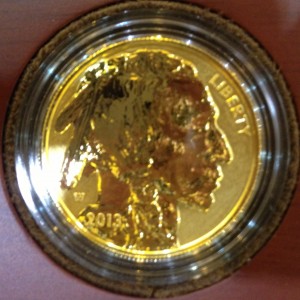
2013-W American Buffalo gold reverse proof obverse
After 54 years there are a lot of exciting choices for the modern collector. And this does not consider the collection of errors or varieties, like the three types of 1972 Eisenhower dollars or the wide versus narrow lettering on the reverse of the 1999 Lincoln cent.
It is past the time for the numismatic community to embrace the collection of modern coins more than it has. There may be few modern coins that are worth thousands of dollars, but they are available to capture the interest of potential collectors. After all, how many of us started collecting by searching pocket change.
Jul 18, 2019 | coins, copper, US Mint
Copper is the third most common element in the world.
Copper is a versatile metal that has been exploited for many purposes since the Bronze Age that started roughly in 3300 BCE. It is as practical as wire carrying electricity and for cooking. It is used for its artistic qualities such as the Statue of Liberty. Copper is also a medium of exchange.
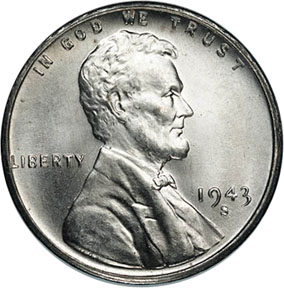
U.S. cents have been made of copper, steel, and copper plated zinc. What’s next?
When coins were struck using precious metals, more were struck using a majority of the precious metal, and the balance was copper. Although legislation required changes in the composition of the alloy, copper continued to provide the filler.
Precious metals, like gold and silver, do not oxidize. Copper will naturally oxidize. Copper oxidizes when it is exposed to the environment. Water, salts, and acids in the air will react with the copper that will cause a molecular change in copper that causes its color to change. A typical example of what happens when copper oxidizes is the Statue of Liberty. The copper statue is now a blue-green color after many years of enduring the elements. That blue-green color is known as verdigris.
In numismatics, the copper oxidation is apparent as the colors of the half-cent, one cent, and two cent coins oxidize. When a coin is the color of the initially polished planchette, it is said to have a red color. As the copper in the coin oxidizes, the color is described as red-brown, sometimes with a percentage of red to brown color. A brown coin is a coin whose red color has completely oxidized.
The oxidation process is natural and can not be stopped. It is possible to slow the process. Eventually, the copper will oxidize and turn every cent ever struck to brown.
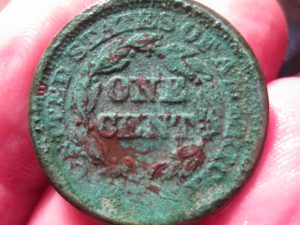
Would this metal detector find be considered “artificial toning” (Image from CTTodd.com)
As collectors, we have seen the natural oxidation of copper accelerated by artificial means. Coins stored in holders made of the synthetic polymer polyvinyl chloride (PVC) produce an acidic gas as it oxidizes accelerating the oxidation of the copper used to make coins. That acceleration can lead to the rapid breakdown of the PVC holder, causing it to appear as if it melted to coin. Numismatists call this damage. It is a natural reaction by the copper.
When copper oxidizes, it does not change its molecular structure but alters its form. If someone would test the surface of a cent with bright red color and one that has turned brown, both will test as being made of copper. The surface would have to examined on a molecular level to see how oxidation has reformatted the molecular structure.
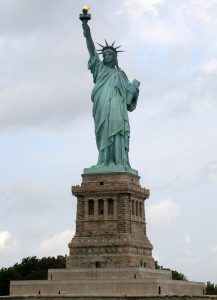
An example of how copper tones
Although few would call the verdigris on the Statue of Liberty ugly, verdigris on a coin causes people to turn their heads away.
Another way that the oxidation of copper changes coins is when a coin becomes toned. Some collectors marvel at colors some coins become when the copper in the alloy oxidizes. Others see the coin as damaged. Both views are right.
From a scientific perspective, a toned coin shows the flaws within the alloy. If the alloy was a consistent mixture of metals, toning on every coin would be similar. Instead, the inconsistencies of how the copper is mixed with the primary metal is revealed in the pattern of the toning. This inconsistency makes toning difficult to predict and challenging to detect whether toning was through natural oxidation or by artificial means.
Experts claim they can tell the difference between natural and artificial toning. With certain exceptions, such as the toning from known contaminants like the lignin in paper and PVC, very few people can tell the difference without extensive examination. Specialized equipment such as microscopes that enhance the image using a type of radiography is the only way to determine the difference between natural and artificial toning. And that is not a perfect solution.
The third-party grading services can examine coins using specialized equipment and determine whether the coin was naturally or artificially toned. But they can only be reasonably sure. Without examining the surface to determine the type of contaminants that caused the oxidation, they can provide the best guess based on the evidence they can collect.
If you read the various numismatic forums, members share many formulas that they found to accelerate the oxidation of the copper in a coin. Some have even bragged how they were able to have the coins graded by the third-party grading services as being naturally toned. Collectors continue to chase these coins and pay additional premiums for them.
Another numismatic curiosity is the alleged conserving of coins to remove damaging oxidation. Unlike the oxidation of iron, which breaks down the molecular bonds of the alloy, the bonds of oxidized copper molecules remain strong. The green color is on the surface of the copper where it was in contact with the contaminants.
It is impossible to reverse the oxidation of copper. The only way to remove the oxidized copper that has turned to verdigris is to remove that layer of copper. When speaking with professionals that restore art and antiques, they admit that their methods of restoring copper involve removing the oxidized layers. They recognize the fact that it is the only way to restore the luster to copper.
However, numismatic conservation services make claims that they can safely remove the oxidation without damaging the surface of the coin. When asking a professional art restoration company whether this was true, they wondered how these companies could get away with making their false claims.
When shown example images of coin conservation found online, the professionals were able to explain how most of the cleaning was done using sonic tools or high pressure distilled water possibly mixed with baking soda to raise the alkaline level of the water. They did refer to this as a form of cleaning because it is designed to loosen the bonds between the contaminants and the metals.
One set of images showed the removal of verdigris on a coin. The expert said that the only way to remove the verdigris spots was the alter the surface of the coin by removing that layer of copper which changes the surface of the coin. It is an evasive procedure, yet the example images showed the coin before conservation and following the work in a third-party grading service holder not marked as having altered surfaces.
While sitting at a table where a bronze bust worth tens of thousands of dollars was in the process of conservation, this expert saw before and after images of silver and gold coins and wondered if the numismatic industry knew something the multi-billion dollar art industry did not.

Art restoration is so understood that a graphic like this does not cause controversy.
Similar openness does not exist in the numismatic industry. Numismatic conservation companies do not document their methods by calling them trade secrets. These coins are in third-party grading service holders without any indication of their conservation, and the auction companies are happy to sell them for thousands or even hundreds of thousands of dollars.
What have we learned?
- Every coin that has been struck for circulation by the U.S. Mint contains copper except for the 1943 Steel Cent.
- Copper oxidized to the point of forming verdigris on the surface.
- Oxidation only occurs on the surface that is in contact with the environment.
- The rate of oxidation is controllable through proper handling.
- Once copper oxidizes, it is not reversible.
- It is not possible to remove oxidation without altering the copper surface.
The art world understands that conservation of copper requires altering the surface. It is accepted as part of an industry where significant works sell for tens- or hundreds-of-millions of dollars. The numismatic world hides behind alleged proprietary secrets and few questions about what they are doing.
Maybe it is time to ask the numismatic conservation companies to disclose what they are doing to understand whether they are altering the coins’ surface, or not. Maybe it is time to ask the third-party grading service why are they not disclosing that they are placing conserved coins in their holders. Maybe it is time to hold the auction companies and dealers responsible for not disclosing when a coin is conserved.
Maybe it is time the industry is honest with itself and honest with its collectors.
Jul 7, 2019 | coin design, coins, news, US Mint

Newly named Artistic Infusion Program artist Steven Kenny (photo courtesy of www.stevenkenny.com)
Kenny’s primary work is surrealism, a style described as “irrational juxtaposition of images.” There are many different styles of surrealism that many artists have explored. One of the most famous surrealist artists was Salvador Dali.

“The Beach” by Steven Kenny. Available as a print on his website.
The way Kenny approaches a subject makes his selection to the AIP a fascinating choice. The U.S. Mint has always had a problem figuring out how to create designs for complex subjects. It is one thing to design a coin with an organization’s logo or the bust of a person, but what about design a coin for a national park, a forest, or an event?
Although seeing a surrealistic design on a coin would be interesting, someone with a background in surrealism has a different view that has the potential to improve on coin designs.
Kenny’s selection to the AIP is a very interesting move for the U.S. Mint. Whoever made the selection should be praised for not only selecting a talented artist but one with a different perspective.
I encourage everyone to explore Steven Kenny’s website to see more about his art.
And now the news…

June 30, 2019
Using powerful infrared light, researchers have found a way to tint metal without dyes or pigments – with scientific implications far beyond coin-collecting  → Read more at theglobeandmail.com
→ Read more at theglobeandmail.com

July 2, 2019
The U.S. Mint selected St. Petersburg surrealist painter Steven Kenny to create designs for coins.  → Read more at abcactionnews.com
→ Read more at abcactionnews.com

July 3, 2019
PHOTO: “MIR”  → Read more at galpost.com
→ Read more at galpost.com

July 3, 2019
To continue, please click the box below to let us know you're not a robot.  → Read more at bloomberg.com
→ Read more at bloomberg.com

July 3, 2019
 → Read more at kitco.com
→ Read more at kitco.com

July 4, 2019
A rare gold solidus dating back 1,600 years has been found by a group of Israeli students in the Galilee region.  → Read more at sci-news.com
→ Read more at sci-news.com

July 4, 2019
A treasure trove of Arab coins dating back some 1,000 years has been discovered in an old German cemetery near the Baltic coast.  → Read more at thefirstnews.com
→ Read more at thefirstnews.com
 The result of the sale of the Enhanced Reverse Proof 2019-S American Eagle continues to reverberate through the hobby. Industry reporters continue to hear from collectors that they feel like the U.S. Mint is taking them for granted.
The result of the sale of the Enhanced Reverse Proof 2019-S American Eagle continues to reverberate through the hobby. Industry reporters continue to hear from collectors that they feel like the U.S. Mint is taking them for granted.
 → Read more at
→ Read more at 



